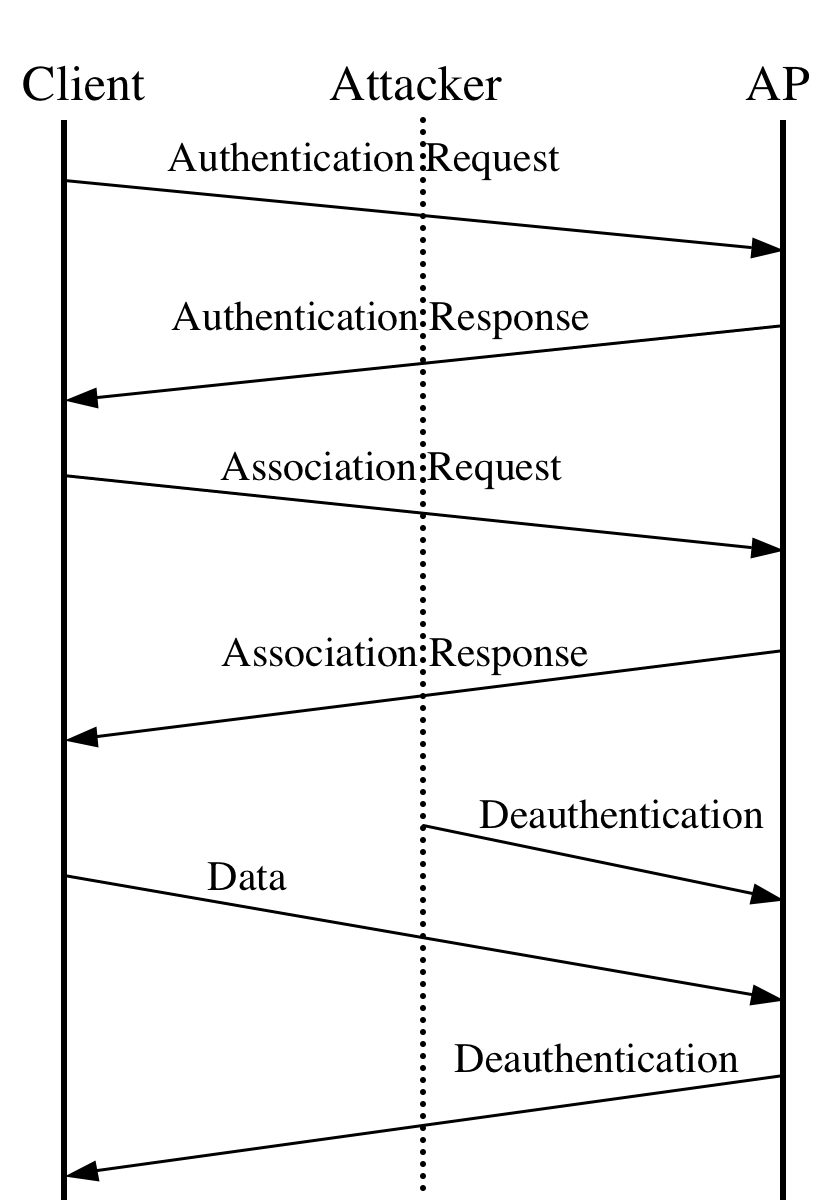
|
Exemplifying this problem is the deauthentication attack. After an 802.11 client has selected an access point to use for communication, it must first authenticate itself to the AP before further communication may commence. Moreover, part of the authentication framework is a message that allows clients and access points to explicitly request deauthentication from one another. Unfortunately, this message itself is not authenticated using any keying material. Consequently the attacker may spoof this message, either pretending to be the access point or the client, and direct it to the other party (see Figure 1). In response, the access point or client will exit the authenticated state and will refuse all further packets until authentication is reestablished. How long reestablishment takes is a function of how aggressively the client will attempt to reauthenticate and any higher-level timeouts or backoffs that may suppress the demand for communication. By repeating the attack persistently a client may be kept from transmitting or receiving data indefinitely.
One of the strengths of this attack is its great flexibility: an attacker may elect to deny access to individual clients, or even rate limit their access, in addition to simply denying service to the entire channel. However, accomplishing these goals efficiently requires the attacker to promiscuously monitor the channel and send deauthentication messages only when a new authentication has successfully taken place (indicated by the client's attempt to associate with the access point). As well, to prevent a client from ``escaping'' to a neighboring access point, the attacker must periodically scan all channels to ensure that the client has not switched to another overlapping access point.

|
John Bellado 2003-05-16